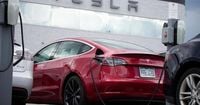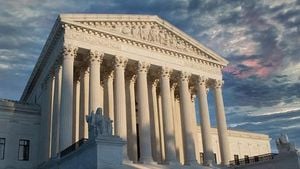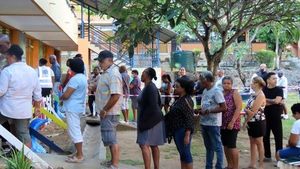On October 11, 2025, the National Highway Traffic Safety Administration (NHTSA) launched its third investigation of the year into Tesla’s Full Self-Driving (FSD) system, shining a renewed spotlight on the electric vehicle giant’s much-touted autonomous technology. The probe, which covers an estimated 2.88 million Teslas equipped with the FSD feature, follows a wave of troubling reports: 58 instances of vehicles allegedly ignoring red and green lights, veering into oncoming traffic during lane changes, and using the wrong lanes to turn or proceed straight through intersections. According to Reuters, these incidents have led to 14 crashes and 23 injuries, raising fresh concerns about the safety of Tesla’s advanced driver assistance systems.
This latest investigation is hardly the first time Tesla’s self-driving ambitions have come under scrutiny. As CBS News noted, the NHTSA had previously opened a probe into the FSD system after crashes in low-visibility conditions, including one fatal incident involving a pedestrian. And just weeks prior, the agency launched an inquiry into the automaker’s electronic door handles, following several deaths—most notably the tragic crash that claimed the lives of three Piedmont teenagers. The company has since announced a redesign of the problematic door handles, a move reported by SFist, but the broader safety questions remain unresolved.
According to Ars Technica, the NHTSA’s investigation is focusing on whether certain actions taken by the FSD system might prevent drivers from supervising the vehicle as required—especially when the system executes unexpected or dangerous maneuvers. The agency has received at least 18 reports of Teslas running red lights, often without any warning to the driver. Another 24 drivers reported that FSD had steered their cars into oncoming lanes, driven straight in a turn-only lane, or made turns from the wrong lane altogether. In a particularly alarming study cited by Ars Technica, the FSD system required 75 human interventions per 1,000 miles of testing—roughly one intervention every 13 miles. That’s a far cry from the seamless, hands-off driving experience many Tesla fans have envisioned.
The agency’s Office of Defects Investigation (ODI) has identified six crash reports where FSD-equipped Teslas failed to stop at red lights, with four of those incidents resulting in injuries. ODI also flagged cases where Teslas with FSD engaged swerved into opposing traffic or attempted to make turns in the wrong direction, even when wrong-way signs or lane markings were clearly present. Complaints have mounted about the system’s failure to provide adequate warnings before making such risky moves, leaving drivers with little time to react.
Beyond the technical concerns, the NHTSA is also probing whether Tesla has met its legal obligations to report crashes involving partially automated driving systems. As Ars Technica reported, the agency has received numerous incident reports months after the actual crashes occurred, raising questions about Tesla’s transparency and compliance with federal regulations. Earlier this year, the NHTSA also opened a review into Tesla’s ‘summon’ parking feature, after a string of minor parking lot accidents linked to cars being remotely instructed to pick up their owners.
Amid these escalating safety concerns, Tesla’s business prospects—and its stock price—have taken a hit. On October 10, 2025, Tesla shares fell nearly 3% after news broke of the new NHTSA probe, according to CNBC. Investors and analysts have long seen the FSD system and related technologies as the company’s future “golden goose.” Tesla currently derives about 90% of its revenue and 94% of its gross margin from auto sales, but bullish voices like Ark Invest CEO Cathie Wood and Wedbush analyst Dan Ives argue that the real value lies in ancillary businesses such as advanced driver assistance systems (ADAS), Robotaxis, and even humanoid robots.
Wood has set an ambitious five-year price target of $2,600 for Tesla shares, citing the commercialization of Robotaxis as a key driver. “Our target in five years is $2,600, and our confidence in that number has gone up now that Tesla is commercializing Robotaxis,” she told CNBC. The company’s compensation benchmarks for CEO Elon Musk include the delivery of 20 million vehicles, 10 million active FSD subscriptions, and 1 million Robotaxis in commercial operation. William Blair analyst Jed Dorsheimer, while more cautious, agrees that the Robotaxi business is central to Tesla’s future, noting that it accounts for the majority of his firm’s price target for the stock.
But the regulatory headwinds are stiffening. The NHTSA’s latest investigation is just one of several active probes into Tesla’s technology. The agency has previously examined crashes involving FSD in low-visibility conditions—fog, sun glare, and airborne dust—and has scrutinized the company’s reporting practices and door handle design. In September, the NHTSA announced it was in the second phase of a three-step process that could lead to a recall of the popular Model Y over an electrical issue affecting the door handles. The government is also looking into reports of parents being unable to open their vehicles’ doors with children trapped inside, a safety hazard that has persisted since the door handle design was introduced in 2018.
The relationship between Tesla and federal regulators has been fraught. Earlier this year, CEO Elon Musk directed the firing of about 30 NHTSA staff members, many of whom were responsible for assessing the risks of self-driving cars—a move that, according to one former worker, could “weaken NHTSA’s ability to understand self-driving technologies.” Musk was later legally compelled to leave his position at the Department of Government Efficiency, and the agency has since intensified its scrutiny of Tesla’s self-driving claims.
Despite the mounting investigations, Tesla maintains that its FSD system is industry-leading and insists that drivers are required to remain attentive and ready to intervene at all times. The NHTSA, however, has received numerous reports suggesting that the technology has “induced vehicle behavior that violated traffic safety laws,” sometimes without warning the driver. The investigation will examine whether FSD’s control authority over certain maneuvers might actually undermine the driver’s ability to supervise the vehicle effectively.
As the stakes rise, the outcome of these investigations could have far-reaching implications—not just for Tesla’s reputation and business model, but for the future of autonomous vehicles in the United States. With billions of dollars and countless lives potentially on the line, regulators, investors, and everyday drivers alike will be watching closely to see how the story unfolds.
For now, the road ahead for Tesla’s Full Self-Driving system looks anything but smooth, as federal investigators dig deeper into the technology’s performance, safety, and compliance with the law.




